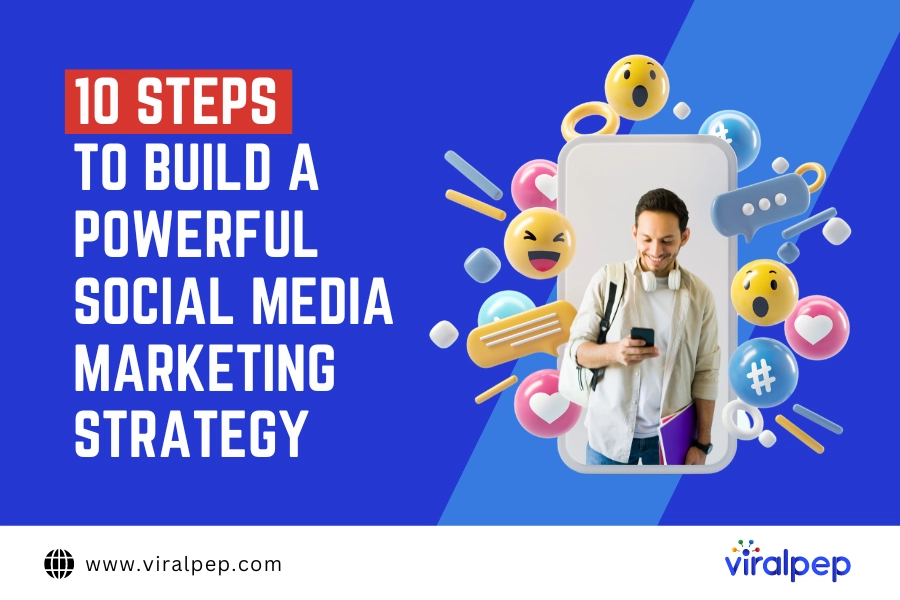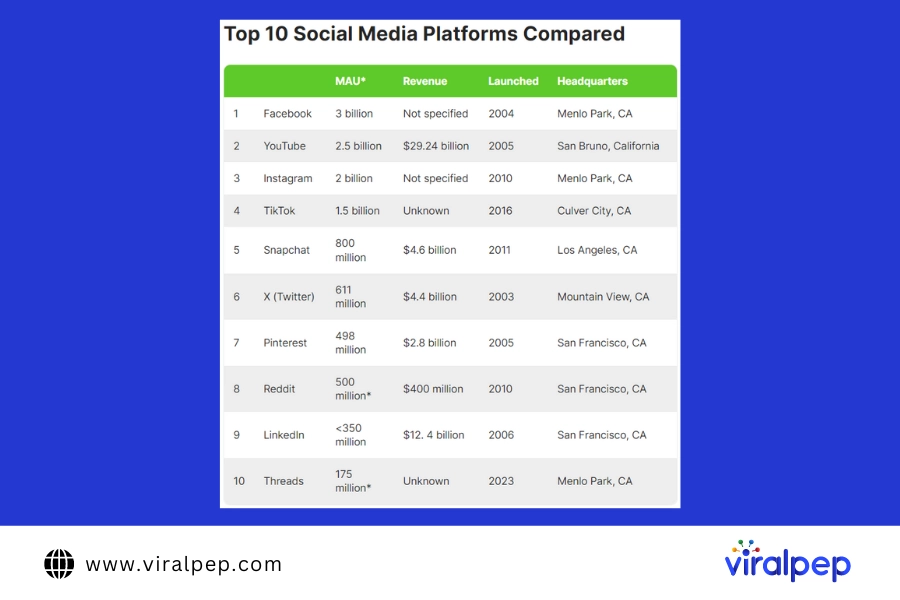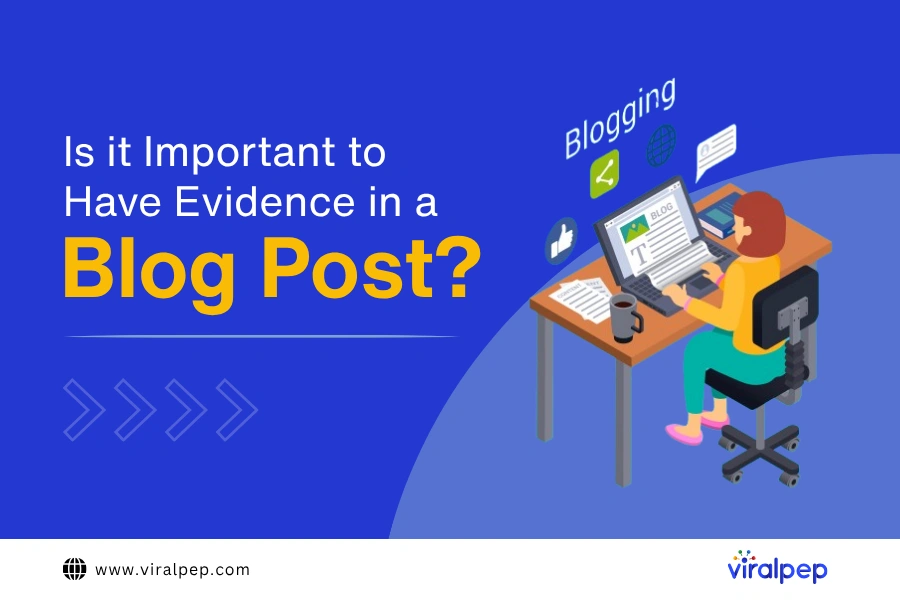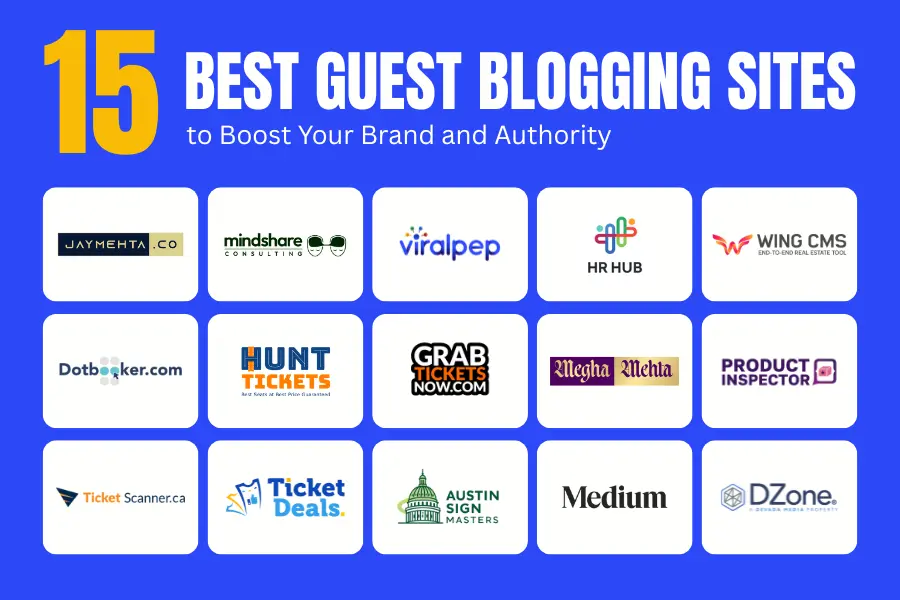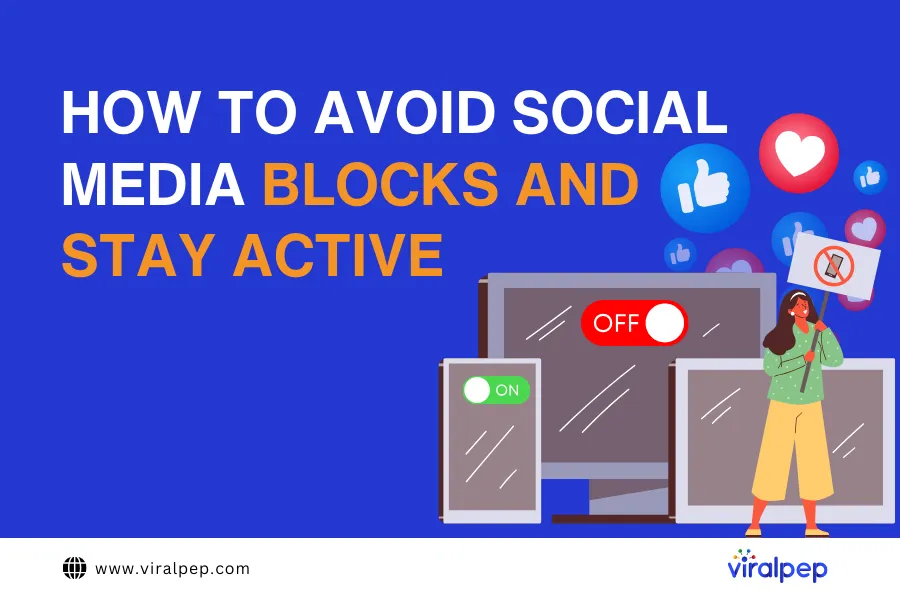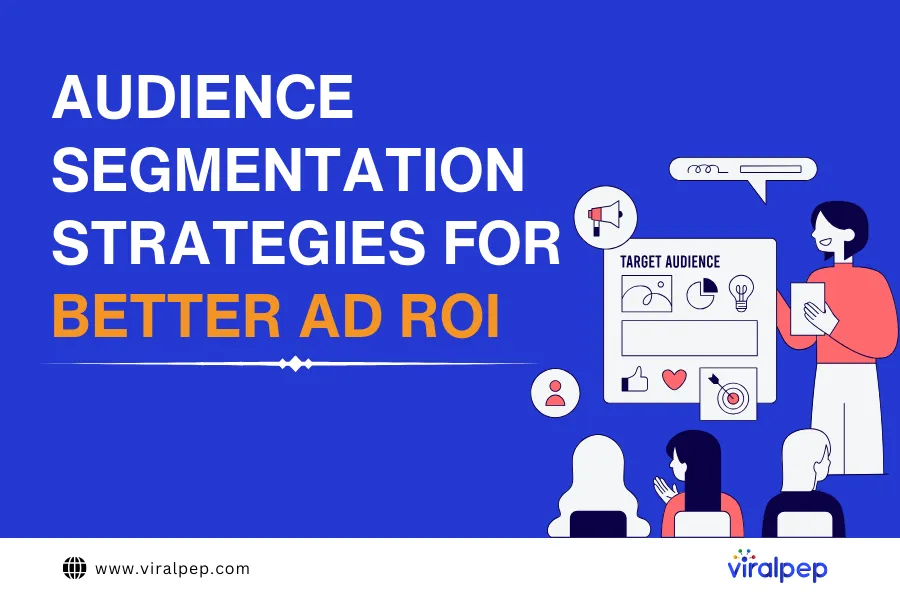Managing social media without a plan often feels like you’re wandering around lost! Between all the different platforms, content types, and metrics dashboards, it gets overwhelmingly fast.
But having a strategic roadmap tailored to your brand makes all the difference. It gives you clarity on who you want to reach, what content will interest them, and how to track whether your efforts are actually working.
In this article, we’ll give you a step-by-step blueprint to craft just such a social media marketing strategy. We designed it for real people managing brands and business pages — not fancy agencies!
What is a Social Media Marketing Strategy?
A social media marketing strategy is a detailed plan that outlines how a brand will achieve its social media goals and objectives. It defines the target audience, positioning, messaging, content strategy, and channels to focus on for optimal results.
An effective social media strategy aligns with the overall business goals while leveraging the unique opportunities within social platforms. It helps brands expand reach, increase engagement, drive website traffic, raise brand awareness, and ultimately boost sales.
If you don’t have a website and increasing website traffic doesn’t fit into your marketing strategy, don’t worry. Sooner or later, as your business grows, you will definitely ask yourself the question “How much does it cost to build a marketplace website?” to conquer new heights.
Benefits of a Social Media Marketing Strategy
Having a documented social media marketing strategy brings immense value for brands in the following ways:
-
Creates Focus and Direction
A social media strategy defines the goals and rules on whom to reach out to, what to post, on which platforms, and how to manage the budget. This focus and direction help avoid spending time and resources on conjecture instead of on a well-planned and executed strategy.
-
Allows Tracking and Optimization
Specific objectives and metrics enable brands to measure campaign effectiveness and return on investment. They can quickly tell which strategies are effective and which ones are not to enhance the effectiveness of the strategies and minimize the ineffectiveness of the strategies.
-
Enables Collaboration
A documented strategy aligns all the people to a common vision. Assigning specific roles and responsibilities means that members of a team are able to pursue common goals in harmony.
-
Prepares for Future Growth
With the ever-shifting dynamics of social media platforms, having a versatile approach ensures that brands are well-positioned for the future. Organizations can quickly shift focus and redirect resources to exploit trends and opportunities.
-
Attracts Executive Buy-In
When strategic plans are supported by data, it becomes easier to secure the executives’ support for funding and new projects that drive growth.
Lastly, it can be concluded that social media marketing is mandatory for predictable and sustainable business development for contemporary brands. Now, let us consider how one can be developed.
How to Create A Social Media Marketing Strategy: A Step-by-Step Guide
Here are 10 essential steps to craft a killer social media marketing strategy for your brand:
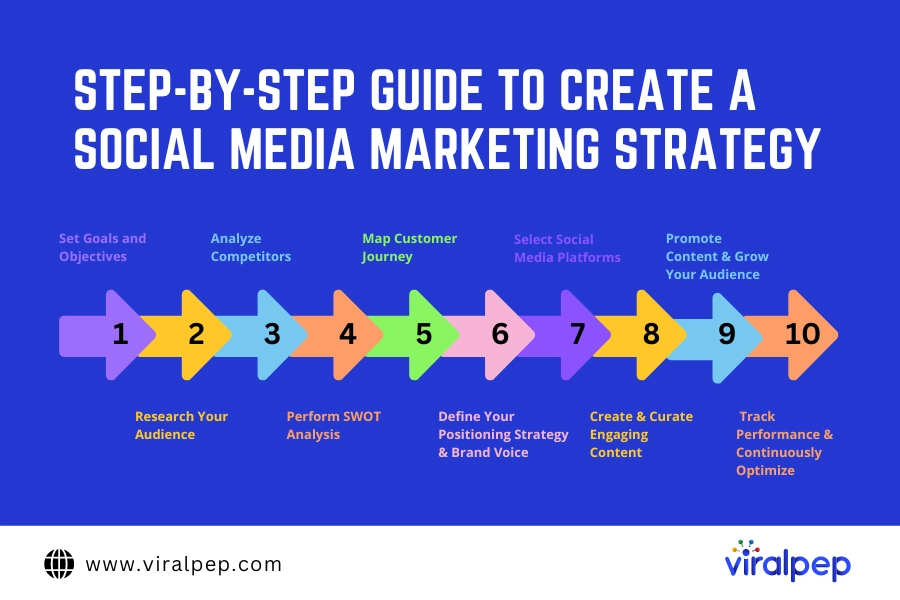
-
Step 1: Set Goals and Objectives
Be crystal clear about what you want to achieve from social media. While broader goals target long-term business growth, set specific and measurable SMART (Specific, Measurable, Achievable, Relevant and Time-bound) objectives across areas like:
- Revenue growth – X% increase in sales driven by social media
- Lead generation – X new MQLs/SQLs per month
- Website traffic – X% growth in site visits from social
- Engagement – X% increase in overall engagement rate
- Follower growth – X new followers per platform per month
These quantified objectives drive decisions and help accurately track performance. As per Content Marketing Institute, 94% of top-performing marketers rely on metrics to guide strategy.
-
Step 2: Research Your Audience
Ensure you get a clear understanding of the target market on social media to develop the right content for the market. Demographics include age, gender, location, income, interests, pain, and buying stages.
To go further, one can conduct online surveys and interviews. Summarise all the data into two to three key buyer profiles with information such as bio, objectives, issues, content type, and platforms. Describing it as something like a “social media manager” or “small business owner” also does the job.
-
Step 3: Analyze Competitors
Do in-depth competitor research focused on their social media presence instead of vanity metrics alone. Assess strengths around engagement levels, community building, and content innovation that you can emulate. Identify weaknesses around poor branding, customer service, paid tactics, etc., on which to capitalize.
Derive platform-specific insights around hashtags, creatives and formats that perform well in your niche. Such competitive intelligence gives you a strategic advantage in fine-tuning your game plan, as per Meltwater.
-
Step 4: Perform SWOT Analysis
Conduct a SWOT analysis (Strengths, Weaknesses, Opportunities and Threats) across shortlisted social media platforms. Audit existing assets like website visitors, email lists, and influencer connections that can amplify social media efforts via cross-promotion.
Assess strengths to double down on established communities on Facebook. Tackle weaknesses around poor branding and engagement levels. Seize opportunities via modern platforms like TikTok and tools like NFTs. Keep updated on algorithm changes, platform shifts and new entrants. This balanced analysis guides optimal platform selection and resource allocation.
-
Step 5: Map Customer Journey
Carefully map out the typical customer journey across awareness, consideration, decision and advocacy stages. Identify key touchpoints where social media content and communities can nurture prospects, address concerns, provide support etc., to drive conversions across funnels. For example, nurture cold audiences via valuable middle-of-the-funnel content and retargeting.
Map specific messaging and platforms to guide users along their unique journey from discovery to retention and referrals. Go beyond hard-selling only to top-funnel audiences.
-
Step 6: Define Your Positioning Strategy & Brand Voice
Articulate your desired brand positioning backed by a messaging hierarchy across social media – what does your brand stand for? What makes it unique? What value does it offer audiences vs competitors? Align to wider business and campaign goals.
Establish a consistent tone of voice reflecting brand personality – be it fun, creative, knowledgeable, supportive etc. Define brand voice guidelines around elements like language style, emojis, humor levels and visual aesthetics. This voice will inform content across teams and strengthen identity.
-
Step 7: Select Social Media Platforms
Carefully evaluate leading platforms based on parameters like audience alignment, content suitability, advertising opportunities, competitor presence and management complexity. Shortlist 2-3 viable ones for focus instead of spreading yourself too thin trying to master every channel.
As per Search Engine Journal, the top platforms marketers prioritize are Facebook, Instagram, Twitter, Snapchat and YouTube.
Pin itShare
Continuous research into user and usage trends is key to predict the next big opportunity early based on tools like Google Trends. Maintain robust profiles on chosen platforms using branding assets, contact info, calls to action and clear messaging.
-
Step 8: Create & Curate Engaging Content
Develop an editorial content calendar aligned to audience preferences and buyer journey stages. Include a healthy mix of engaging formats like educational articles, entertaining videos, inspirational images and helpful FAQs.
Leverage both original, owned content from thought leaders and UGC-like customer testimonials for diversity. Ensure licensing and attribution best practices.
Repurpose and tailor assets like infographics and stats optimized for the unique formats of each platform – square videos for Instagram, fleets for Twitter (X) etc. This saves effort while respecting platform cultures.
-
Step 9: Promote Content & Grow Your Audience
With shareable content made as per your strategy, aggressively promote it via both organic and paid tactics on selected platforms. Post consistently 2-3 times daily leveraging peak user times and weekends.
Use owned channels like email newsletters, website banners and on-site pop-ups to retarget visitors. Employees, influencers and loyal fans make great brand ambassadors to widen reach. Well-planned hashtag campaigns, takeovers during events and user-generated contests often trend organically, expanding your audience.
Paid ads like Facebook Lead Ads and LinkedIn Sponsored Content complement organic efforts well. Retargeting warm visitors via customized ads and offers helps convert them faster compared to cold traffic.
-
Step 10: Track Performance & Continuously Optimize
Consistently monitor key metrics using built-in and third-party tools to derive actionable insights around content, platforms and campaigns. Assess impressions, engagement rate, sentiment, click-through rate, conversions etc.
Figure out your best formats, positioning themes, promotion avenues etc. via detailed analysis. Double down on specific content pillars, platforms and creatives that deliver ROI while rectifying poor performers.
Evolve messaging and strategy continuously based on the latest trends, innovations and platform shifts. Set up real-time alerts around performance changes. Conduct quarterly reviews to track growth trajectory against goals. This agility is key for sustaining measurable success on ever-changing social media.
Social Media Promotion with Viralpep
Viralpep is an emerging social media management platform that helps brands streamline workflows, collaborate better and make data-driven decisions. Its key capabilities make Viralpep a viable tool for crafting successful social media strategies:
-
Multi-Platform Integration
Viralpep allows users to integrate and manage multiple social media accounts like Facebook, Instagram, X (Twitter), LinkedIn, YouTube etc. from a unified dashboard. This saves tons of time switching between interfaces.
Teams can streamline collaboration by accessing shared inboxes, asset libraries, calendars, etc., in one place. Smooth cross-platform posting is also enabled.
-
Robust Analytics
In-depth analytics around audience demographics and psychographics, engagement metrics, best content times, competitor performance etc. provide actionable insights.
Brands can identify high-performing platforms, campaigns, creatives for further optimization to amplify results. Trends analysis informs strategy evolution as well.
-
Smart Content Scheduling & Publishing
Viralpep makes it easy to schedule and publish content across integrated platforms at the best times for maximum visibility.
Bulk scheduling of platform-specific content formats is possible, too. Teams save hours spent manually posting cross-platform.
-
Competitor Benchmarking
Viralpep enables brands to benchmark performance against competitors on all key metrics like engagement rate, follower growth etc.
Gaps can be bridged by optimizing strategies and campaigns accordingly. It’s easy to track leaderboard positions.
-
Audience Management
Detailed audience analysis tools provide insights to identify and target high-value segments on social media.
Lookalike modeling helps discover more potential customers. Retargeting gets personalized for conversions.
-
Campaign Management
Collaborate with your team to ideate, plan, execute and track integrated campaigns spanning content, ads and influencers.
Streamlined workflows ensure consistency across channels and territories for global campaigns.
-
Influencer Marketing
Viralpep makes influencer identification, outreach, and campaign management efficient through dedicated tools.
Measure overall content amplification and track granular metrics like clicks, views and sales per post.
-
Omnichannel Integration
Social media strategies can be integrated across paid, owned and earned channels for omnichannel success.
Lead flows to CRMs and impact metrics like email signups, traffic, and app installs become trackable.
With these well-rounded capabilities, Viralpep helps craft data-driven and high-performing social media strategies for modern brands. Its workflow efficiencies also free up resources for higher-value tasks.
Conclusion
An effective social media marketing strategy aligned with business goals is key for consistent growth. By following the above steps, brands can craft an optimized plan to maximize ROI across chosen platforms and audience segments.
Regular performance tracking and agile optimization based on insights take the guesswork out of social media success. So, analyze your landscape, set clear goals, create strategic plans and execute relentlessly to become a social media rockstar brand.


